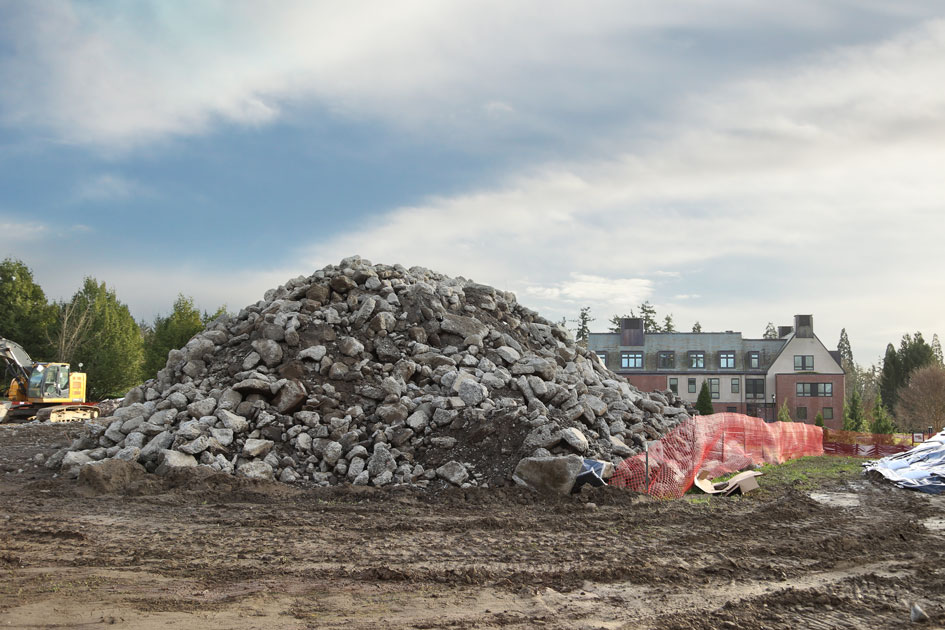Rubble with a Cause
A colossal pile of concrete looms over rugby pitch as Reed stockpiles construction debris to build new dorm.
Just south of Steele Street, in the muddy stretch of lawn near the rugby pitch, a behemoth is growing.
It’s a hulking pile of concrete that was once fated for a landfill. Instead, demolition crews from around the city have delivered roughly 200 truckoads of debris to Reed in an effort to reduce the carbon footprint of the forthcoming new residence hall.
Presently, this mound of rubble resembles a miniature Mt. Hood and weighs roughly 5000 tons. Its apex is slightly right of center when viewed from the sidewalk on Steele, and a gentle grade obscures less and less of The Grove as the eye scans east. Between now and the end of February, the pile could double in size again.
Then, this concrete will be crushed. Pulverized. Born anew as gravel.
The gravel will be used to create roadways for construction vehicles in traversing the building site and possibly—pending approval by the City of Portland—to fill in foundations and footings. It’s a green building practice that offsets a project’s need for crushed rock and finds a creative use for old concrete that was otherwise destined for a landfill.
Better yet, reusing old concrete means eliminating the environmental costs associated with mining new concrete, according to Jacob McKay of Hoffman Construction. The bigger the mountain grows, the the more rock stays in the earth.
Towny Angell, Reed’s Director of Facilities Operations, noted that this isn’t the first time he’s seen the practice during his 29 years at Reed. A similar method was used during the construction of Naito and Sullivan Halls in 1997.
The new dormitory will be located between The Grove and Naito Hall, where the tennis and basketball courts currently reside. Construction is slated to begin in March.
Tags: Campus Life, Cool Projects, Climate, Sustainability, Environmental
